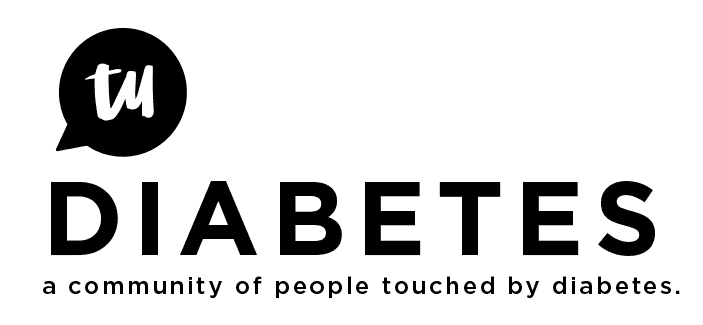I found this very interesting as I am on about double that amount of daily dosage. I am probably a little below average weight for my age and height and do eat a rather high carb intake considering diabetes. I would bet the average man my age not watching is carb intake is eating over 400 grams a day. I also don't get much coverage per unit. Its around 7 grams per unit.
I take near double this, too, but I've overweight for my height. I eat about 100g of carbs per day (I was lower but backed off on that a bit).
I read somewhere that the insulin non-diabetics produce is 25 times more powerful than the stuff we inject/pump. I think probably what they meant is it's released at exactly the right time directly into the bloodstream.
That's about my TDD, but I only eat about 30 carbs a day.
I'm not so sure about this guy's numbers...
He has this in his typical sliding scale example (scroll down):
For a blood sugar reading of < 50, give 4 units of insulin
For a blood sugar reading of 51 to 110, give 5 units of insulin
WTW?!?
I've never seen a sliding scale that would recommend injecting ANY insulin when your blood glucose is at 70 or less, much less under 50...?!?
Hrm...?
I remember reading something similar a couple of years ago. Can't remember the source and an interesting factoid. There have been a bunch of threads where members here have shared their TDD. I think, in general, people try to keep their TDD down and there is definitely something to be said for the law of small numbers, but our numbers are all over the place regardless of level of control.
I'm at 200-300g carbs/day and I rarely take over 26 units TDD. Since going over to the pump, I don't have any record of a TDD reaching 30 units. Like Jen says, there are just too many factors to take into account.
Some of his info is wrong.
Humalog insulin is given AT mealtime rather than 20-30 minutes before meals like we do with regular insulin.
Homegrown > schwag
I take 24 NPH at night regularly. Humalog/R I use 1 unit per 7 grams. I usually eat between 250 and 300 grams per day excluding an occasional snack or carbs to bail me out of a low. That being said I'm up around at least 65 to 70 units per day excluding corrections for highs. Also when I use R I generally wait at least 1hr 20min before eating. If I drop a little low before then I'll just throw a piece of candy in my mouth to hold me over.
The sliding scale is only done at mealtimes, so the base level of insulin is what you give to cover your meal, regardless of what your blood sugar is.
Injected insulin doesn't behave like endogenous insulin, so not a fair to compare insulin injected SubQ with that secreted by a functioning pancreas. Our insulin has no C-peptide & other possible synergistic components.
My TDD is less than mentioned, but I'm a small person. My I:C ratio isn't large due to hypothyroidism. If I didn't eat low carb, I'd be way over 35 units.
I'm not sure what you mean by "regular" insulin, Jim, but many of us bolus our fast-acting insulin (Humalog, Novolog or Apidra) 15-20 minutes before meals. The only time I bolus AT mealtime is if I'm lowish. I'd be high if I didn't give my insulin this headstart. YMMV.
He means R which is the older fast acting insulin. Generally if I am low to normal using humalog I eat right way. I only wait if I am post 95 to start with. With R its peak is more like 2 to 2.5 hours so to eat right away would not work out to well. My dad who is also on insulin many times eats his meal first before taking his insulin. The highs don't really bother him. At his age its better he keeps them higher in general.
I don't recall how old your dad is Gary, but I can't think of any age at which keeping your blood sugars high is a good thing, whether they bother you or not!
OK. I looked up my old sliding scale from my HMO. It said that if you were under 70 to eat first, and then after you're done with your meal, to inject two IU less than you'd normally inject for the meal cover. Injecting that much insulin before eating when you're already at 50 or below seems dangerous to me. I mean, what if you're at 40? Or 30? It just seems dangerous to me. Then again, I'm a worrier. Heh.
Well, if someone is elderly and fragile, running in the 130's may be less dangerous than lots of hypos from trying to run in the 90's. Passing out and falling down is bad enough when you're 50; it can be a death sentence when you're 80. A dear friend of mine (in her early 80's) fell off of her porch and into some bushes last year and she almost died. She couldn't get up again and was trapped (and hypothermic) until her son got home from work. She was in the hospital for some time after that fall. My sister's mother-in-law was in a similar state for the last five years of her life: prone to dizzy spells and falling. Running low when elderly and fragile is dangerous.
Even if you beleive this quoted figure, as Gerri notes external insulin is way less efficient than natural insulin. So you might expect as much as 2-3 times the amount of external insulin to be required to match the effectiveness of natural insulin.
